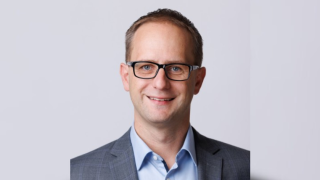
As the deployment of 4G LTE networks gathers pace across the developed markets, operators will have to phase out GSM or CDMA spectrum to accommodate the increasing demand.
AT&T was one of the first to announce its retirement of legacy spectrum in 2012. Today, it is already midway through efforts to migrate its 2G customers before shutting the network down by 2017. The carrier plans to refarm the spectrum it uses for its 2G network to speed up networks and provide more capacity for its 3G and 4G users.
Similarly, Singapore’s three incumbent operators, Singtel, StarHub and M1, have revealed that they will stop offering 2G GSM services in the country from April 2017. The move is designed to free up spectrum allowing them to deliver faster 3G and 4G services.
While a select few operators in the US and Asia have begun preparing for 2G and 3G network closures, the majority of operators are not in a position to close their legacy networks.
“Rather, operators are deciding how to best manage a transition towards full network closure, given that machine-to-machine (M2M), voice, and roaming revenue cannibalisation remains a pertinent issue. We don’t expect networks to be retired en masse until closer to 2020,” said Nicole McCormick, principal analyst at Ovum.
Long-term strategies are required for shutting down legacy networks.
In most cases, 3G networks are likely to be switched off before 2G – the latter still remains an important source of revenue as it offers the unique capability of M2M communications which uses GSM SMS.
A European front-runner in 4G deployment, Telenor Norway announced in June that it plans to completely shut down its 3G network in 2020, before retiring 2G five years later.
“It’s better to retain 2G than 3G because all the devices are still embedded with 2G, so you will lose out without the network. 2G is still important for the M2M market,” said Magnus Zetterberg, the company’s CTO.
The emergence of VoLTE is expected to accelerate the transition from 2G and 3G to 4G networks. Before VoLTE arrived on the market, mobile calls were carried on 2G networks, with data being sent and received on 3G and 4G networks. However that looks set to change. 4G LTE is equipped to provide a better mobile broadband service, compared to 3G. It is also well-positioned to take over the voice responsibilities of VoLTE from 3G.
Speaking exclusively to Capacity, Telenor Norway’s CEO, Berit Svendsen, said: “4G is the main network for data capacity but there is a problem – it doesn’t have a voice network. 4G is dependent on 3G and for now, we need 3G for voice. When we launch our VoLTE service next year, we will then have a voice network on 4G. Then we can start thinking about retiring 3G.”
In addition, operators will also need to consider the cost of migrating residual customers. AT&T developed a migration plan for customers three years ago upon the announcement of its plans to retire its 2G network.
The majority of its customers will be migrated naturally to the carrier’s latest networks with the adoption of high-speed packet access (HSPA) and LTE smartphones. The carrier will engage with the small number of customers who carry 2G GSM phones and seek to transition them towards the purchase of 3G and 4G phones.
In Singapore, a majority of mobile users have already migrated to more advanced platforms. The country’s operators said they will continue to reach out to 2G users through retail and advertising channels to encourage them to switch in the run up to the closure of the 2G network.
At the end of March 2015, there were just 286,600 2G mobile subscriptions and a 2G penetration rate of approximately 3.5%, according to the Infocomm Development Authority of Singapore (IDA).
As more operators continue to roll-out 4G networks, spectrum will become increasingly scarcer. From refarming old spectrum to purchasing airwaves, operators must ensure that their spectrum position is strengthened with every move.
Already Telenor Norway is plotting its next move. “We will next prepare for 5G by combining the different spectrums with higher bandwidth. We will need to have more spectrum with the increasing traffic that we are seeing. That is our plan going forward,” said Svendsen.




